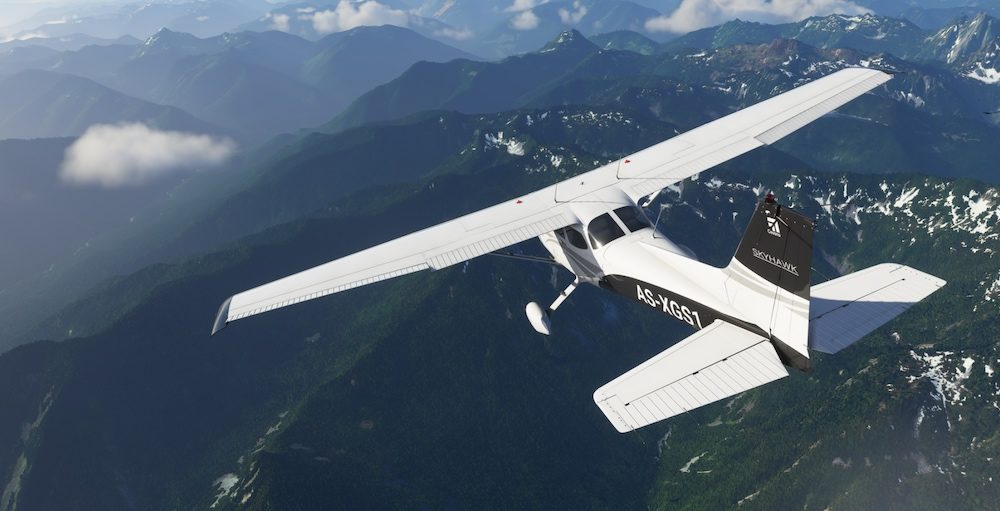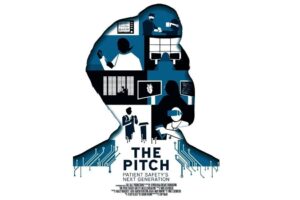What Healthcare Can Learn From Microsoft’s Flight Simulator 2020
In the aviation industry, simulation is the mandated (i.e. regulated) and practiced system for skills-based education, acquisition, and demonstration. From ground control and cabin crew to the pilots and their plane’s mechanics — everyone is dialed into the understanding that simulation saves lives. To that end, it should come as no surprise that since 1982, Microsoft’s Flight Simulator game, or we prefer “Serious Game”, has attracted people to the profession of flying — but more remarkably — trained them. With the announcement of the breath-taking technologies included in next years Flight Simulator 2020, its no wonder that industry analysts are considering the video game as a useful tool in addressing the future’s guaranteed pilot shortage. All of this has huge implications for healthcare simulation — just maybe in about 10-25 years.
Excerpts From CNN’s Paul Sillers’ Article “Can Microsoft Flight Simulator’s 2020 reboot solve the pilot shortage?”
When Sebastian Wloch, CEO and co-founder of Asobo, started working with Microsoft on the new Flight Simulator the first thing he did was take flight lessons. The bulk of Asobo’s employees also started flying to ensure they had a grip on the experiences they were trying to digitally recreate. One example of the level of realism now achievable in the new Flight Simulator will be that weather will mirror what’s happening in the real world by drawing on live weather data feeds.
Sponsored Content:
Previously flight sims simply pasted in generic imagery of clouds. “Thanks to the conjunction of new technologies we can now finally render the world realistically, making users feel more connected,” says Wloch. “The clouds are what we call volumetric, meaning they’re 3D. When you fly through clouds the weather engine shows 3D rain. If you have the sun behind you and the rain in front, you’re going to see rainbows — everything’s extremely realistic.”
Simultaneously, Microsoft’s Bing was accumulating a hyper-real high-definition database of satellite imagery: “The planet’s getting scanned at a rapid pace. We have two petabytes of data on Bing in ultra-high detail, and we’re going to have full mapping of the planet very soon.”
Beyond the reboot of Microsoft Flight Simulator there’s another dimension to the story that’s acutely relevant to the future of air travel in the real world. With flight traffic set to double over the next 20 years, there’s a looming pilot shortage. Flight simulators are the incubators of tomorrow’s pilot talent pool — a factor that airline flight crew recruiters are very conscious of. “There are several skills needed by pilots that can be practiced on this kind of flight simulation technology. Examples are hand-eye coordination, flight-related multi-tasking and instrument interpretation and scanning” says Captain Marie Stridh, flight captain and pilot recruiter at SAS Scandinavian Airlines. “I’ve met several pilot candidates who’ve been interested in airplanes and flying for a long period of time before they started their actual training. When too young to fly themselves, many of them spent time with these types of games, eager to learn as much as possible about airplanes and flying.”
Sponsored Content:
A good example of this is Captain Stridh’s colleague Daniel Andersson, a young first officer at SAS who used MS Flight Simulator for extra practice of instrument flight procedures when attending flying school: “As the level of reality of these games increases, it allows for experiencing and practicing a wider scope of real-life situations — that can complement the regular flight training,” says Andersson. Looking to the future when electric planes become available, the next generation of pilots, brought up on a diet of digital games, might be a natural fit. “Skills from playing home flight simulators could be relevant to learn to handle some aspects of present-day airliners.
With the right software and hardware setup together with appropriate theoretical understanding it could very well serve as a useful way to acquire some of the skills needed,” says Captain Stridh. “The complexity of present and future-generation aircraft will drive a development towards increased and improved simulator training. And, due to the cost and lack of availability of full-scale flight simulators, this might be realized in small-scale flight simulators including home computer software for practicing routines in cases of severe weather encounters, like windshear, when it’s important that pilots’ responses are immediate and correct.” These symbiosis between Flight Simulator and a career path in the real world of aviation isn’t lost on Microsoft: “First and foremost we’re making a product for simmers,” says Neumann. Read the full article on CNN here.
Implications for Healthcare Simulation
Reading through the CNN article above, the implications for such advanced gaming simulation should be more than apparent for our future of simulation in healthcare. Just imagine instead of aviation, we replaced the end outcome of these sentences with a hypothetical pretext of healthcare, with just some very minor edits to the quotes above…
“As the level of reality of these games increases, it allows for experiencing and practicing a wider scope of real-life situations…”
“Simulators are the incubators of tomorrow’s talent pool — a factor that recruiters are very conscious of”….
“There are several skills needed that can be practiced on this kind of simulation technology. Examples are hand-eye coordination, related multi-tasking and instrument interpretation and scanning…”
Clearly we can already see from the research and from our own common sense, that clinical simulation enables learners and professionals to more closely experience the realities of working in teams to maximize the care of patients — just as it does in aviation. Improving outcomes and increasing confidence while reducing stress, costs and errors, we can easily see the correlation between the global success of simulation in aviation and our own fledgling industry of simulation in healthcare. The only real difference is that with the NTSB, FAA, Black Boxes, CRM Communications requirements, and mandated simulation training mandates, the aviation industry is about 50 years ahead of healthcare with regards to adoption of simulation technologies.
When the healthcare industry full adopts clinical simulation technologies, the level of realism available in the market place will go way way up. As computing power increases, chip costs go down, and graphics capabilities expand, the level of detail possible in medical education will be uncanny. Even now, “Serious Games” like Oxford Medical Simulation already use Virtual Reality to push new boundaries of realism in nursing simulation and education. So maybe we are well on our way towards our own “Patient Simulator 2020” after all?
Read the Full CNN Flight Simulator 2020 Article Here!
Lance Baily, BA, EMT-B, is the Founder & CEO of HealthySimulation.com, which he started while serving as the Director of the Nevada System of Higher Education’s Clinical Simulation Center of Las Vegas back in 2010. Lance is also the Founder and acting Advisor to the Board of SimGHOSTS.org, the world’s only non-profit organization dedicated to supporting professionals operating healthcare simulation technologies. His co-edited Book: “Comprehensive Healthcare Simulation: Operations, Technology, and Innovative Practice” is cited as a key source for professional certification in the industry. Lance’s background also includes serving as a Simulation Technology Specialist for the LA Community College District, EMS fire fighting, Hollywood movie production, rescue diving, and global travel. He and his wife Abigail Baily, PhD live in Las Vegas, Nevada with their two amazing daughters.
Sponsored Content:
















